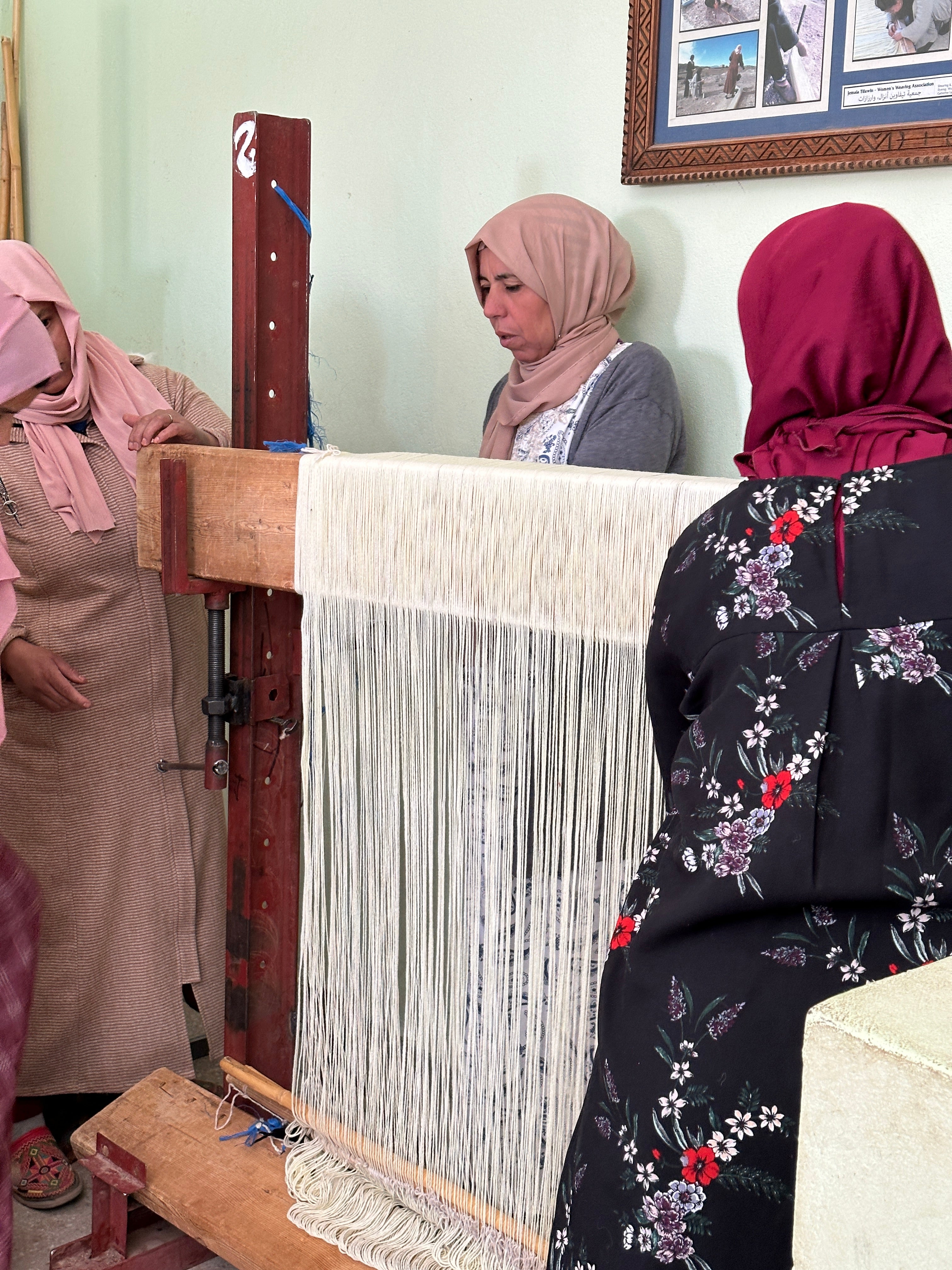Shopping Cart
*continental US addresses only
*continental US addresses only
Your Cart is Empty
It was a bit of a bribe. My mother had been asking me to travel with her for about a year and for a variety of reasons it had not happened. Then she suggested a weaving tour of Morocco. Nobody knows you like your mother.
Interestingly, the weaving was the least interesting element of the trip. I know how to weave, I know how to small-batch dye, I know how yarn is carded, spun and plied. What I found fascinating was what a communal activity weaving is in Morocco, and I am going to guess, many other cultures not my own.
In the West, weaving is a largely solitary endeavor. We may take a class or belong to a guild where we are weaving with others, but we wind our warps solo and while we may enlist a friend to help us beam on, we sit alone at our looms. In Morocco we spent two days with the women of the Anzal Weaving Association and the experience could not have been more different.
The carding, spinning and plying of the wool all happens in a group, sort of as an assembly line (or, in this case, an assembly circle) with a tremendous amount of ceremony, singing and smartphones (both theirs and ours!).

Winding a warp takes three people and not much equipment. No fancy warping boards or warping mills here! Two metal stakes driven into the ground spaced the length of the warp did the trick. The white bits at the base of the first stake are from a sugar cube that is placed atop the first stake and broken with the first strike of the mallet, to infuse ‘sweetness' into the weaving.

From there, the warp is lashed on to broad planks of wood and, in one part mysticism, one part testing for tension, a wooden dowel is rolled down the warp. If it rolls quickly, it is a good warp and will weave quickly. If it rolls slowly it will weave slowly and be problematic.


The “loom” in the Association building consists of large metal uprights and clamps (secured with a shoe!) to hold the boards in place.


We arrived when the ladies were working on a large hand-knotted rya rug. Pieces this large and this intricate require many weavers working in unison and counting warp threads correctly to make sure the desired color is knotted in the right spot. This particular rug required six women on the bench, all weaving in harmony.

For these women, weaving is not about the equipment but about the community — and for incredibly practical reasons. They sell their work and are often the primary earner in the household. While we certainly witnessed moments of “many bosses” in the room, they are quite cognizant that they prosper more collectively. The association or cooperative model is standard for Moroccan artisans, where resources are pooled and while each weaver is paid when her work sells, a portion of each sale is returned to the organization to pay for more materials and cover overhead that would be too costly for any single weaver.

This all got me thinking, while we may not physically weave together, we are connected, through the threads of our shared interest, if nothing else. You are Gist’s community. Shukran, as they say in Morocco. Thank you. In a season of thanks and gratitude, thank you for visiting our site, supporting our business and keeping this wonderful craft alive.